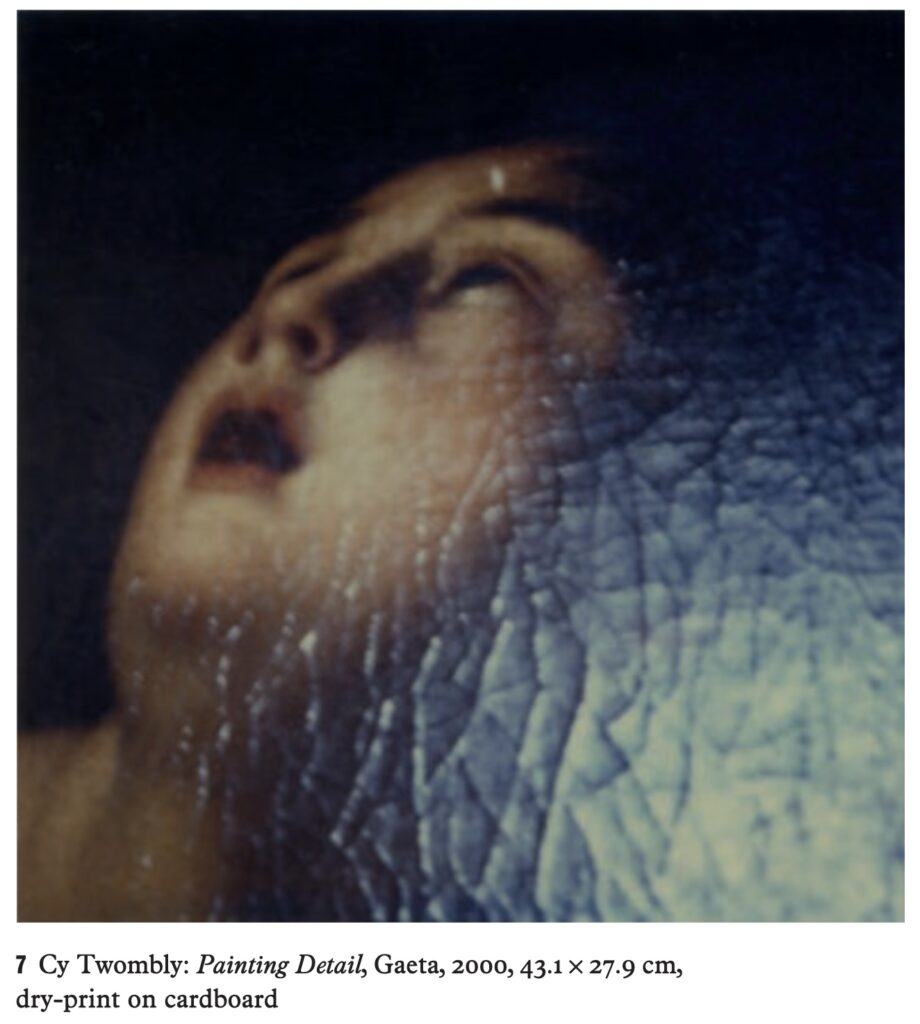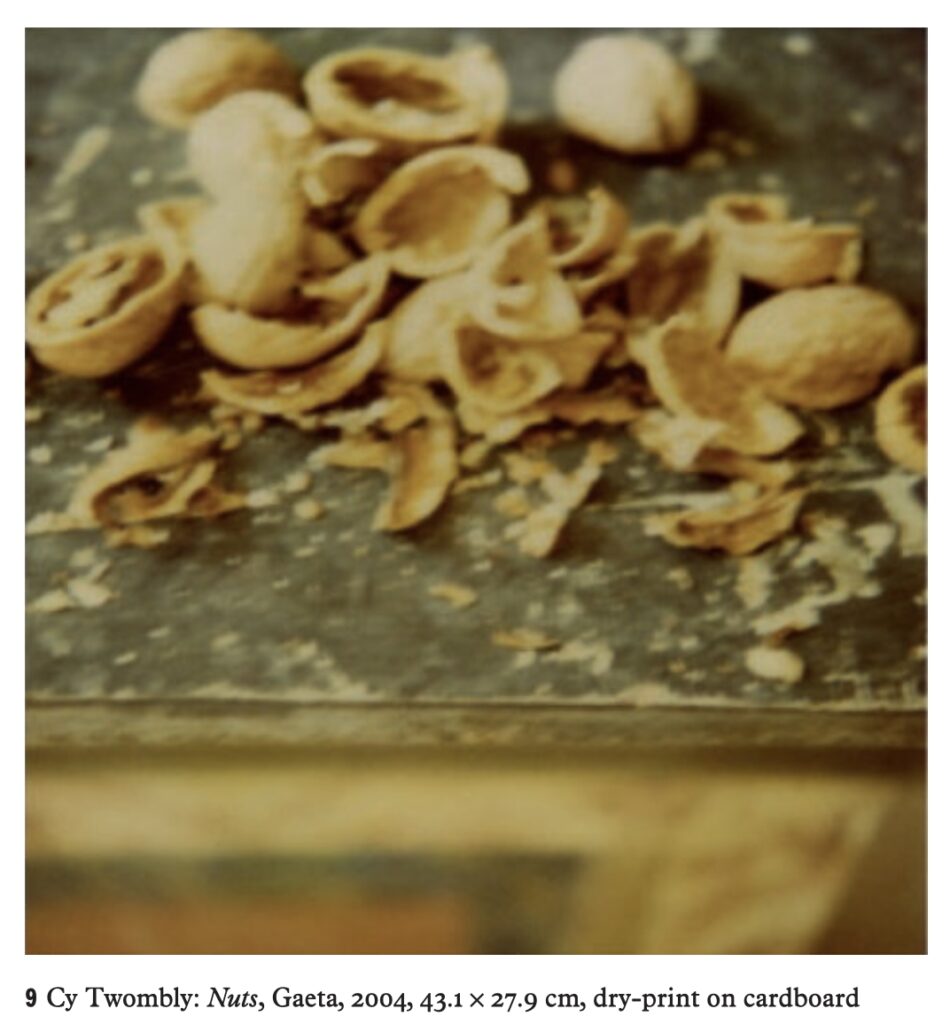
I could not remember where I got this 2000 Cy Twombly photo, until I found a screenshot with a caption, and I realized it was from Steffen Siegel’s presentation on the photos at Cy Twombly: Bild, Text, Paratext, a 2012 conference held at the University of Cologne. It went undiscussed. Even though it seems to embody Siegel’s ultimate point, that Twombly made photos as an exercise to capture the artist’s vision. In this case, a glance at a raking angle of sunlight reflecting on the crackled surface of a painting in his house at Gaeta.
Siegel talks about Twombly’s blurriness and “excessive nearness” as he takes photos with “mediocre” equipment, as if the instantaneous intimacy is not obvious, and obviously what attracted Twombly to his medium.

Siegel discusses this at more length in regard to Nuts (2004), another image from Gaeta, of an extreme closeup of walnut shells on a painted credenza.
From the Belgian artblogger at Utopia Parkway, we learn that Nuts was included in Cy Twombly: Le temps retrouvé, an exhibition at Collection Lambert in Avignon in the summer of 2011, one of the last shows Twombly worked on before he died. Twombly selected photos by a whole range of artists—Brancusi, Lartigue, Lawler, Mann, Sherman, Sugimoto—to show alongside his own. I would think that a closer look at this show, organized, we’re told, by an “artist eager to renew the experience” of his last successful show at Collection Lambert, with a title taken from the last volume of Proust, would yield more insight into Twombly’s view of his photographic project than parsing Barthes for the hundredth time.
The entirety of the 2014 english translation of the Paratext conference is in such a wonky format on academia.edu, that I didn’t link to it at first.
